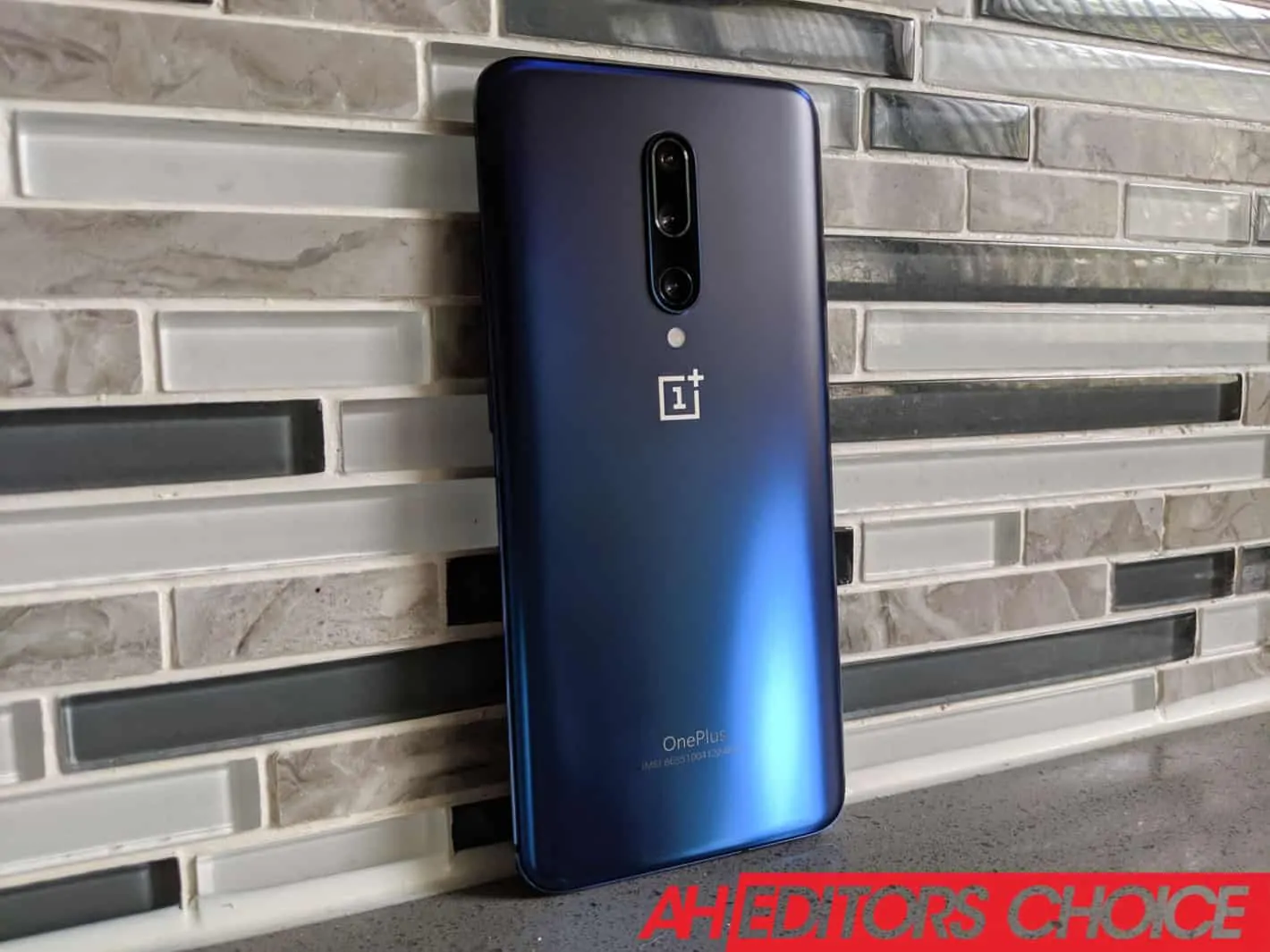OnePlus 7 Pro is the best smartphone, that won’t break the bank
OnePlus has slowly grown into a household name, in the smartphone industry. It’s now one of the larger smartphone makers in the world, despite it only launching two smartphones per year (and those only being flagship smartphones). It has built a reputation for building great smartphones with high-end specs and a low price. But in 2019, OnePlus introduced its biggest and most expensive smartphone to date. The OnePlus 7 Pro, which starts at $669.
This is leading many to wonder whether the OnePlus 7 Pro is overpriced and possibly overhyped. Well, we’ve spent a good couple of weeks using the device as our daily driver. So let’s find out if this is the smartphone to buy.
Disclaimer: At Android Headlines, we now review all phones from the “good” and the “bad” perspectives. We’ve designed our reviews to help readers get a clearer perspective on what makes a phone worth buying or avoiding without the little details getting lost. The “good” review focuses on the positives for the OnePlus 7 Pro, while you’ll be able to find all the negative details in our “bad” review.
There’s no need to rehash the spec-sheet for the OnePlus 7 Pro. If you’re reading this review, chances are you know the entire spec-sheet that OnePlus has made for this smartphone. It beats just about every phone in every category. But specs aren’t the whole story when it comes to a smartphone, and whether it’s one you should buy or shouldn’t buy.
The display is breathe-taking
The display is pretty incredible, and yes we are going to mention its specs really quick. It’s a 6.67-inch fluid AMOLED display with a 90Hz refresh rate. We’ll come back to the refresh rate in a minute. Can we just take a minute to drool over how good this display looks? OnePlus finally made the jump from full HD to Quad HD resolution on the OnePlus 7 Pro, and it really does make a difference.
Colors on this display are pretty impressive. Watch some HDR content from Netflix or YouTube, and you can really appreciate the AMOLED panel that OnePlus has sourced (likely from Samsung, though we are unsure if it is them or possibly LG). With the curved edges, it makes the content melt off of the display. The curved edges are much more dramatic than the Galaxy S10 and Galaxy S10+, which is also a downside for the OnePlus 7 Pro.
With most smartphones going for a hole-punch display or a notched display, having a nearly bezel-less smartphone display without any interruptions is really nice to have. OnePlus opted for a motorized pop up front-facing camera. A feature that its sister-brands – vivo and OPPO – have been perfecting over the past year or two. The earpiece is still at the top, above the display. But it’s much smaller than normal. Fortunately, OnePlus did not do an in-display speaker like LG did with the G8 ThinQ this year.
Now, let’s circle back around to that refresh rate. This is the first phone to feature a 90Hz refresh rate. Yes, Razer did use a high-refresh rate on its phones, but that was even higher at 120Hz – double the usual 60Hz. Razer also used an IPS or LCD display, and not an OLED display. That’s where things really differ for OnePlus, as it’s using a much better display panel than Razer did.
With the faster refresh rate, it makes the OnePlus 7 Pro feel faster than any other phone out there. It’s hard to show on video, since most cameras do only shoot at about 60fps, without doing slow-motion, but at 90Hz you are getting faster scrolling that looks super smooth to the eye.
Since the display refreshes faster than normal, this would mean that battery life would take a hit right? It does, but it’s not as bad as many might have thought.
Shockingly good battery life
That display is pretty insane, and a huge upgrade (some might say the biggest upgrade from the OnePlus 6T). But somehow, despite only jumping to a 4000mAh capacity battery, the OnePlus 7 Pro still lasts an entire day on a charge.
During our usage, we kept the display on “auto switch” and at 90Hz. Brightness was set to automatic, and was used outside from time-to-time in direct sunlight (aka, hitting max brightness for a good amount of time). We were able to hit six hours of on-screen time repeatedly, and it was almost a daily occurence.
Now yes, six hours of on-screen time is not spectactular, the OnePlus 7 Pro will not win the best battery life smartphone of the year award in 2019. But it does last a full day. It usually would run out of juice after I did. Being unplugged for a good 20+ hours on many days. That’s not bad, considering this was with auto-brightness and at 90Hz. If you drop it down to 60Hz, you could likely get another hour or two of on-screen time.
It should go without saying, but these numbers will differ for you, depending on how you use your smartphone. Since none of use our phones the same, none of us will have the exact same battery life numbers. So keep that in mind.
Oxygen OS is still the best version of Android available
The early days of OnePlus, the company was using CyanogenMod. Those that may not remember that far back, CyanogenMod was a custom ROM that was very popular, based on AOSP and supported many smartphones long after the manufacturer stopped. CyanogenMod then turned into a company – Cyanogen – and wanted to work with companies to build smartphones for its software. OnePlus was the first to do that. Though that didn’t last long, the OnePlus 2 launched with Oxygen OS, it’s own operating system.
Oxygen OS has kept the same philosophy that Cyanogen had. Which was basically a stock Android build, and only adding in features that make the software more useful. Not adding in stuff just because, and bogging it down. Oxygen OS, now, is one of the fastest Android skins out there. With Oxygen 9.5.6 on the OnePlus 7 Pro, it actually feels faster than the stock version of Android 9 Pie found on the Pixel 3 and Pixel 3a – part of that is the hardware, but not all of it.
It’s able to feel faster because OnePlus has gotten rid of a lot of animations. While they look cool, these animations actually slow down the operating system and also take up more space. It also makes it feel slower, because you have to wait for the animation to finish before you switch to that next app.
OnePlus has a ton of great features built into Oxygen OS. This includes a system-wide dark mode – which Google is adding in Android Q finally. There’s also a hidden app drawer, where you can hide the apps that you don’t want others to see when you give your phone to them to look at a photo. OnePlus has a built-in screen recorder – which has been updated to support 90Hz – among many other features.
What users really like about Oxygen OS, however, is the customizability. OnePlus allows you to customize just about every aspect of the phone. Don’t like the color of the toggles in the notification pull down? That can be changed. You have a number of colors available to choose from. If those don’t suite your tastes, there’s a color picker that allows you to pick the exact color you want. Too many icons in the status bar? You can remove the ones you don’t want. For instance I have removed the VoLTE, WiFi Calling, NFC and the battery (having just the percent, not the percent and battery icon) icons.
There’s a lot to like about Oxygen OS, and there’s no way that we can tell you everything great about Oxygen OS in this review, without turning it into a book. But if you do like having a clean version of stock Android, with plenty of customization, then Oxygen OS is the route to go.
Plenty of biometric choices
Last year, OnePlus introduced the West to in-display fingerprint sensors. We had seen them before from vivo, OPPO, Huawei and others. But those never made it to the West – in particular, the US. The OnePlus 6T had an in-display fingerprint sensor and it was not good. Most in-display fingerprint sensors aren’t.
However, the OnePlus 7 Pro’s fingerprint sensor is actually pretty good. OnePlus touted how it had made the sensor much larger this time around. Making it easy to put your finger in the right spot to be recognized and unlock the phone. It has also sped up the sensor. So it’s faster to recognize your fingerprint and unlock the phone. And it wasn’t all talk. It is actually pretty fast, one of the faster in-display fingerprint sensors I have used in recent memory.
If you are not a fan of the in-display fingerprint sensor though, there is still the option of using face unlock. It’s a little slower now, since the camera needs to pop up and recognize your face before it can unlock. But, considering all that needs to happen, it’s pretty fast. It’s not super accurate though. For instance, I set up face unlock without glasses on (I wear glasses all the time though). It was able to recognize me instantly with glasses on, which it shouldn’t. It was also able to recognize me with sunglasses on, a bit slower but it still works.
Basically, don’t use face unlock as your primary method of unlocking the OnePlus 7 Pro, because it is not that secure, and easy to spoof. But at least you have options for securing your OnePlus 7 Pro.
The phone for spec heads
The OnePlus 7 Pro is the perfect phone for those that want the latest and greatest specs in their smartphone. It’s also great for those that don’t want to fork over a thousand bucks for their new smartphone. The OnePlus 7 Pro is not perfect, but it might be as close to the perfect smartphone as we are going to see in 2019. OnePlus has done nearly everything right with this phone, minus a couple of areas. And for a price of $669, it’s hard to find something that will be better than the OnePlus 7 Pro in this price range.
OnePlus sells the 7 Pro in three spec variants, starting at $669 and going up to $749. You can purchase your OnePlus 7 Pro from its website using the link below.
OnePlus 7 Pro - OnePlus.com - $669+




